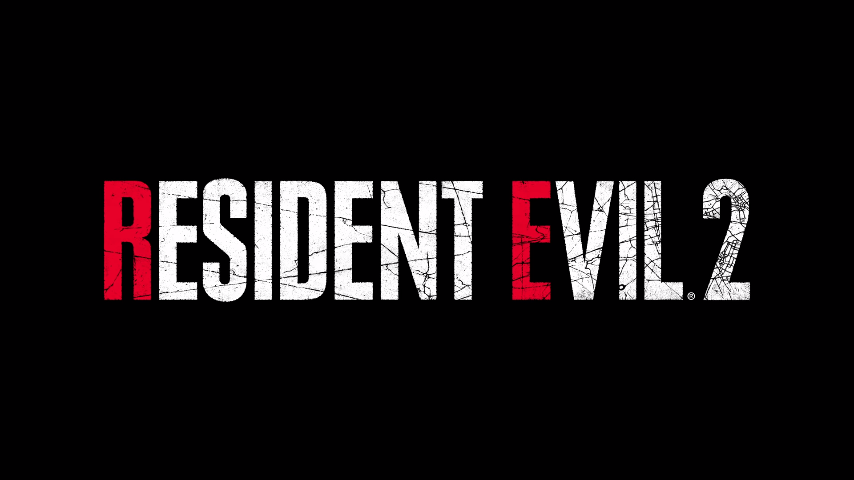Review: Resident Evil 2: Remake – The Masterclass on Recreating a Classic by Intent, Not Design
Resident Evil 2: Remake, or REmake 2 as fans call it, is the perfect example of a remake done right without sacrificing the game-play for its faithfulness to the original 1998 game (which also happens to be set in 1998). The reason for this is due to the philosophy of rebuilding the game from the ground up, and recreating a tense atmosphere of constant danger through a different approach to the same kind of horror present in the original.
The game starts very bluntly, getting to a bare-bones menu with three choices: Options (to change settings related to technical parts of the game) and the two main characters’ names, Leon Kennedy and Claire Redfield. On top of that, the menu is dark, and there isn’t any music to accompany it, already giving off an unsettling air, a welcoming improvement to a rather awkward looking menu with a close up of a zombie’s eye in the original.
Upon choosing a character (I started with Leon Kennedy, so I’ll talk about his story), what looks like a movie begins. Leon, a rookie policeman, is driving into Raccoon City, a fictional Middle-American city, after receiving a call from his future station warning him to stay away. He stops at a gas station and encounters his first zombie in the storage room, which leads to more showing up outside. Upon leaving the convenience store in a panicked hurry, he meets the game’s other protagonist, Claire, and escapes by driving into the city.
This introduction is a marked improvement from the original. It builds up suspense in just the right way to make the first zombie encounter intimidating and scary in all the same ways as the original, but the added effect of the near photo realistic graphics (thanks to the game’s unique engine) makes the fear this encounter instills all the more palpable. The worker in the convenience store ominously points to the storage room door from where he sits, nursing a wound on his neck, which gives the player a sense of foreboding that keeps them jumping at every little thing. This chilling introduction is the perfect way to set up what has yet to come.
The two get separated after the car is wrecked and decide to make for the police station where Leon finds his commanding officer, Lieutenant Marvin Branagh, injured in the main hall. A secret passage in the statue in the main hall is revealed after solving a puzzle, and the player encounters their first boss fight: a monstrously transformed scientist who had originally created the zombie virus. The boss fight leads to the station’s parking lot, where Leon meets an FBI agent, Ada Wong, who saves him from zombie dogs and warns him to leave while he still can.
The voice and sound design of the remake has been the most improved aspect from the original to this new iteration, Marvin’s voice being the most noted improvement. As the original game came out in the era when fully voiced stories in video games were in their infancy, the voices used for the characters were almost alien in their sound and intonation. In the remake however, each character sounds like a real person, and their lines have been cleaned up since the original script. One of the most important parts that shines brightest, though, is the ambient noise. When everything is quiet, and the player is in an area that is relatively open, the game plays a random noise of something falling over down a hall or in another room, keeping the player continually on edge, regardless of safety.
Upon leaving the police station, Leon and Ada find a secret lab with a very conspicuous “Umbrella Corporation” logo on the wall. As it turns out, Ada was there to investigate Umbrella Corp., a pharmaceutical company that created the virus (called “G”). With this new discovery, Leon goes in further to see what the facility has in store, fighting a giant plant that made (and I kid you not) humanoid plant-zombies.
Now, if plant-zombies doesn’t sound crazy enough (I’m serious, they have venus flytraps for heads) there’s two other serious threats, and their designs make for great scares and stressful, yet fulfilling encounters. The first is the Licker: a zombie that looks like all of its musculature is on the outside of its body. They’re as blind as a bat, but have hearing to make up for it. Their designs have been far improved from looking like the mannequin in a health class. The other enemy appears about halfway through the game, and he’s fairly unannounced. He is Mr. X. Nothing about him is explained, and he can’t be killed (and the only change to him was giving him a hat from his original concept art). His towering, imposing figure, combined with his storming footfalls make him probably the best part of the game in terms of scare-factor alone.
After Leon fights the monster he fought before, now known as William Birkin, the facility’s self-destruct sequence activates and it’s a mad dash to the exit, a train at the very bottom of the facility. This is the point where the player has their final boss fight, and much wanted revenge on Mr. X for having plagued them for the majority of the game, ending with using an anti-tank missile to deal with Mr. X for good (and let me tell you, nothing was more satisfying).
Finally, Leon narrowly escapes the exploding facility by getting on the train just as it is leaving, and reunites with Claire, who all the while had her own adventure, saving the daughter of the mutated scientist from the virus, ending with her starting up the train in the first place.
All in all, the gameplay is responsive and simple, making for complex encounters with all different manner of zombie groups to fight through, with a compelling story furthered by much improved dialogue and voice-acting, and masterful sound design that’ll make you want to keep playing. This game is what all future remakes should strive to be: a revival of a classic through different methods than the original to convey the same sense the original brought. Without a shadow of a doubt, REmake 2 deservedly earns a rock solid 100/100 score.








